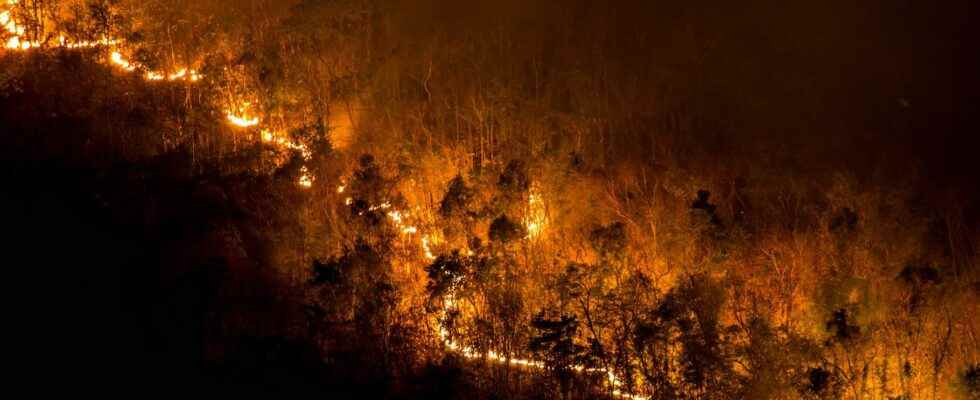You will also be interested
[EN VIDÉO] Forest fires: Australia’s climate suicide? Thousands of houses reduced to ashes, 28 dead and an unimaginable number of animals missing. Since September 2019, Australia has been in flames. An environmental disaster attributed to global warming for this country whose energy mix is centered on coal.
A few days ago, the 2022 edition of the Borders report published each year by the United Nations Environment Program (UNEP) identified three impending plagues that threaten humanity. including forest fires. Today, two new publications confirm this. Forest fires are gaining ground and becoming more and more intense.
The report Spreading like Wildfire: The Rising Threat of Extraordinary Fires, written for UNEP by some fifty experts, recalls first of all that the Forest fires are the result of a complex combination of biological, meteorological, physical and social. Thus, if global warming contributes to the increase in risk, it is not the only one to blame. The impact of land use and management and that of demography, for example, should not be overlooked.
However, experts note that the global warming tends to create increasingly favorable meteorological conditions for the outbreak of mega-wildfires: more frequent and more pronounced droughts, higher temperatures, lower humidity, lightning dry, winds strong. All this contributes to lengthening and intensifying fire seasons in areas already known for it. And even to ignite regions hitherto spared by the fires.
Thus, experts envisage a significant increase in fires by the end of our century in certain regions such asArctic. If our emissions of greenhouse gas continue, the tropical forests Indonesia and southern Amazonia could also go up in smoke. Finally, the number of mega forest fires should increase by 30% by 2050 and even by 50% by the end of our century, regardless of the scenario of our emissions of greenhouse gas.
The proliferation of “Flammable Nights”
Especially since researchers at the University of Colorado (United States) highlight another somewhat neglected aggravating factor: the resurgence of hot, dry nights. With climate change, in fact, the nights have warmed up relatively more than the days over the past seven decades. And the models predict that the situation will get even worse in the future.
Thus, according to researchers at the University of Colorado, the number of nights they qualify as“flammable” in the western United States has increased by 45% in 40 years. The equivalent of 11 “Flammable Nights” additional during the year. Against only — but all the same — a week of “Flammable Nights” addition to one-fifth of the world’s flammable land.
Researchers also show that on a planetary scale, fires nocturnal have become more than 7% more intense between 2003 and 2020. And even about more than 30% in the western United States, when traditionally firefighters rely instead on cooler and wetter nights for relief and help control forest fires.
Focus on prevention to avoid dramatic consequences
The trouble with forest fires is that they pose both health and biodiversity and even… global warming. With the economic costs involved — up to $350 billion a year, just for the United States. A recent study shows that exposure to fumes costs the lives of more than 30,000 people each year in 43 countries. The forest fires that ravaged the Pantanal region in Brazil last year destroyed nearly a third of one of the world’s greatest reservoirs of biodiversity. Finally, the forest fires fit into a loop of feedback which amplifies global warming — and ultimately the severity of fires — by being responsible for huge greenhouse gas emissions. For the months of July and August 2021 alone, no less than 2.5 gigatonnes of CO2the emissions equivalent annual from India.
The UNEP report concludes by calling on governments to review their priorities. By investing nearly half of their budget ” Forest fires “ in the prevention — while it currently concentrates no more than one percent of the budgets — about a third in firefighting and the rest only in repairs, a response considered ” short term “ and indeed, unsuitable. In this context, the experts recommend both relying on indigenous knowledge and implementing a global response, international cooperation, which would make it possible to develop and share knowledge more effectively.
Interested in what you just read?
